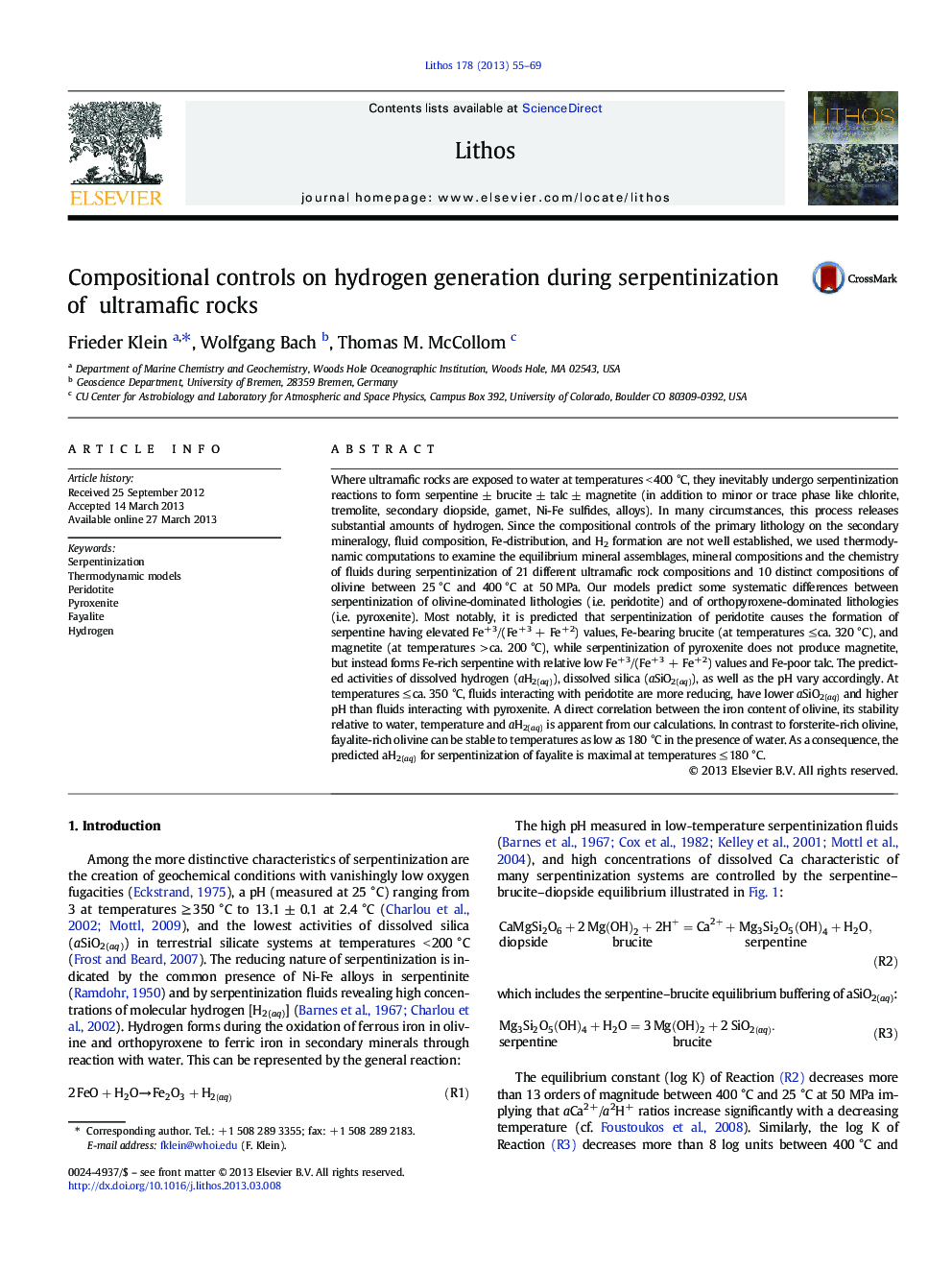| Article ID | Journal | Published Year | Pages | File Type |
|---|---|---|---|---|
| 4716251 | Lithos | 2013 | 15 Pages |
•H2 generation during serpentinization varies as a function of protolith composition.•H2 generation during serpentinization varies as a function of temperature.•Serpentinization of olivine can cause the formation of a free H2 gas phase.•Peridotite + water → Fe-poor serpentine + Fe-bearing brucite ± magnetite.•Pyroxenite + water → Fe-rich serpentine + Fe-poor talc, but no magnetite.
Where ultramafic rocks are exposed to water at temperatures < 400 °C, they inevitably undergo serpentinization reactions to form serpentine ± brucite ± talc ± magnetite (in addition to minor or trace phase like chlorite, tremolite, secondary diopside, garnet, Ni-Fe sulfides, alloys). In many circumstances, this process releases substantial amounts of hydrogen. Since the compositional controls of the primary lithology on the secondary mineralogy, fluid composition, Fe-distribution, and H2 formation are not well established, we used thermodynamic computations to examine the equilibrium mineral assemblages, mineral compositions and the chemistry of fluids during serpentinization of 21 different ultramafic rock compositions and 10 distinct compositions of olivine between 25 °C and 400 °C at 50 MPa. Our models predict some systematic differences between serpentinization of olivine-dominated lithologies (i.e. peridotite) and of orthopyroxene-dominated lithologies (i.e. pyroxenite). Most notably, it is predicted that serpentinization of peridotite causes the formation of serpentine having elevated Fe+ 3/(Fe+ 3 + Fe+ 2) values, Fe-bearing brucite (at temperatures ≤ ca. 320 °C), and magnetite (at temperatures > ca. 200 °C), while serpentinization of pyroxenite does not produce magnetite, but instead forms Fe-rich serpentine with relative low Fe+ 3/(Fe+ 3 + Fe+ 2) values and Fe-poor talc. The predicted activities of dissolved hydrogen (aH2(aq)), dissolved silica (aSiO2(aq)), as well as the pH vary accordingly. At temperatures ≤ ca. 350 °C, fluids interacting with peridotite are more reducing, have lower aSiO2(aq) and higher pH than fluids interacting with pyroxenite. A direct correlation between the iron content of olivine, its stability relative to water, temperature and aH2(aq) is apparent from our calculations. In contrast to forsterite-rich olivine, fayalite-rich olivine can be stable to temperatures as low as 180 °C in the presence of water. As a consequence, the predicted aH2(aq) for serpentinization of fayalite is maximal at temperatures ≤ 180 °C.
